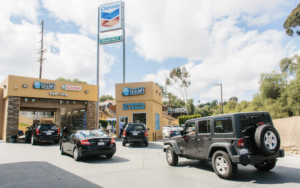While tech layoffs are dominating the headlines right now, stubborn labor shortages remain in industries that rely on frontline workers.
Over the summer there were just 6.4 million people looking for work, for the 8.8 million job openings in the United States, according to the Bureau of Labor Statistics, and the difference between open positions and those looking for work has been widening since 2021.
Many of these open jobs are for hourly, frontline, or entry-level roles in industries like manufacturing and hospitality, so naturally, they don’t tend to spark the same media attention as former high-flying tech firms hitting harder times.
However, the labor shortage this points to is very real, and very worrying. According to Gartner’s Emily Rose McRae, the only solution for companies is to look beyond default labor sources. As she succinctly puts it: “Organizations can no longer meet their talent needs through traditional sourcing methods and candidate pools,” she said.
And, let’s not beat about the bush; people with disabilities are a large and still untapped source of workers.
Record employment for people with disabilities
When I say untapped, it’s perhaps worth putting this into a bit more perspective.
In the recent past, huge progress has actually been made in companies employing people with a disability.
Approximately 11%, or 22 million working-age Americans, have a disability. Historically, the workforce participation rate for working-age adults with disabilities was around 30%, while the rate for persons without a disability was 75%.
This has changed a lot In the years since the pandemic, with the disability employment-to-population ratio for people with disabilities rising to record highs. Most recently, it reached 38% in August, according to the National Trends in Disability Employment (nTIDE) report published by the Kessler Foundation and the University of New Hampshire.
However, it’s still the case that much more could be done. More employers need to understand the benefits employing people with a disability bring.
So here’s just a few examples that I hope will encourage more companies to think about employing people with disabilities:
“Our most dedicated employees”

The car wash industry sees turnover rates of 100-300%. Julie Smith is the HR director at Soapy Joe’s, a San Diego County car wash chain with 16 locations.
Smith had prior experience with employees with disabilities and saw the opportunity to stabilize Soapy Joe’s workforce. “I was familiar with the assets that adults with different abilities can bring to an organization,” she said. “Coming to Soapy Joe’s, I was a big advocate for bringing in the program because I knew it would solve many of the issues we were having with retention and turnover.”
Soapy Joe’s team includes Jesus, an employee with a developmental disability in the firm’s National City location. Jesus leads the company in sales of memberships that give customers discounted pre-paid car washes and give Soapy Joe’s recurring revenue. Jesus has entered a management training program to move up in the company.
People with disabilities are some of our most dedicated employees,” said Smith. “They come to work, and they’re smiling. They’re ready for work. They’re excited for work.”
“If I could have a hundred, I would”

It’s no secret that high turnover rates continue to plague the manufacturing sector, with about 40% of employees calling it quits yearly, according to the Bureau of Labor Statistics.
Doug Jacot is the director of manufacturing at Acushnet Golf, which counts Titleist and FootJoy among its brands. Every day, a team of five employees with disabilities builds about 1,000 boxes and 3,000 packaging inserts at the company’s San Diego manufacturing facility.
“It’s hard to find people to do this work,” Jacot said. But he’s been hiring people with disabilities for more than 20 years. “They are the happiest group I’ve ever been around, and they elevate the attitudes of everyone around them. They’re happy to be here, and if I could have a hundred, I would.”
“We’ve only had good experiences”
 Society for Human Resources Management
Society for Human Resources Management
In the grocery business, turnover averages 48%. To build a high-quality, long-term workforce, Raley’s, a supermarket chain in California and Nevada, has been relying on employees with disabilities for decades.
“We’ve only had good experiences hiring people with disabilities,” said Store Team Leader Chyenne Moomey.
For example, Angela “Angie” Rao, who has a developmental disability, has worked for Raley’s as a courtesy clerk for 32 years. According to Danielle Bergmann, Angie’s manager, “she’s probably one of the top five courtesy clerks I’ve ever had.” That’s saying a lot, as Bergmann has worked for the company for 28 years.
Proven benefits
Not only is hiring people with disabilities a morally good thing to do (and discriminating against them at interview stage is illegal), the business benefits of a workforce that includes people with disabilities are proven, if not well known.
A landmark Accenture study found that companies that actively include employees with disabilities achieve 28% higher revenue, double the net income, and 30% greater profit margins than those that don’t.
Research published by the National Institutes of Health found a direct link between the economic benefits of hiring people with disabilities and lower employee turnover and greater long-term retention, reliability, punctuality, productivity, and customer loyalty and satisfaction.
Low risk, high reward
One of the reasons employers often cite for not including people with disabilities is the added cost of “reasonable accommodations” that the Americans with Disabilities Act (ADA) requires. That myth is long busted.
A survey of 3,528 employers by the Job Accommodation Network (JAN) found that 49.4% reported that the accommodations for employees with disabilities “cost absolutely nothing.”
For employers that incurred a one-time cost to accommodate employees with disabilities, the median expenditure was just $300.
Meanwhile, the Society for Human Resources Management pegs the average cost of replacing an hourly worker at $1,500 each – far more than the cost of accommodating an employee with disabilities.
Businesses struggling to find frontline workers would do well to consider people with disabilities.
